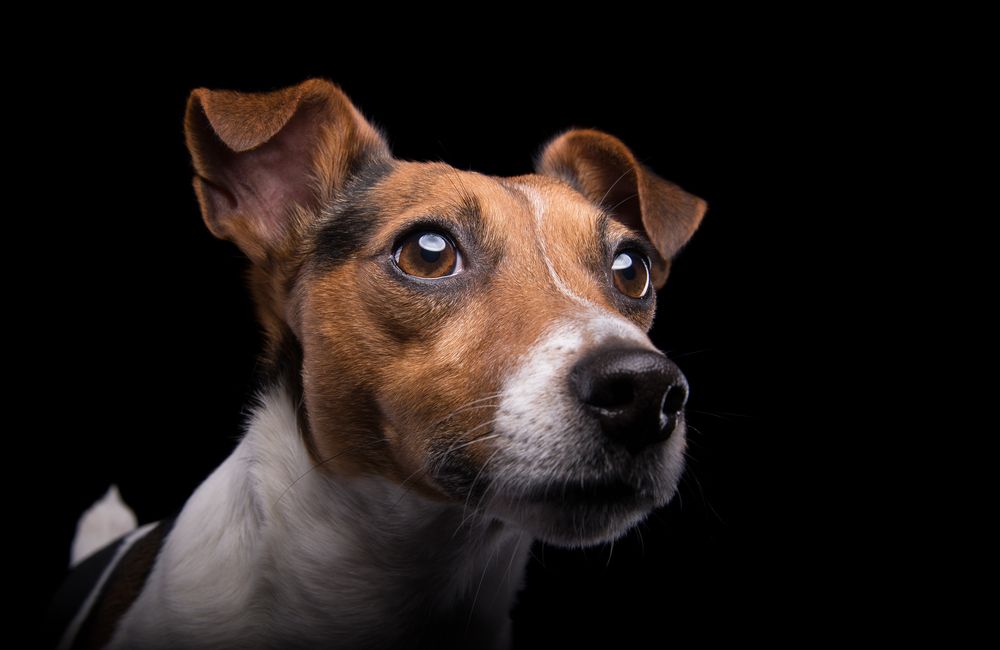
A dogs facial whiskers are also meant as protection for the dog acting as a barrier for the muzzle and eyes. Whiskers detect very faint vibrations caused by these changes in air currents and act like radar detectors.

A dog will also use the whiskers on his face to locate objects in much the same way a blind person uses a cane.
Why do dogs have whiskers on the side of their face. Whiskers are pieces of coarse hair that sprout of out a dogs hair follicles on their face. The average dog has whiskers above their eyes on the sides of their muzzle and on their chin. Your dogs whiskers allow it to navigate their environment and avoid threats that could be potentially harmful to them.
By Stanley Coren PhD for AKC Family Dog Dogs have a set of stiff hairs protruding from the sides of their muzzles that are popularly called whiskers These are not at all like the. You can demonstrate this for yourself by tapping gently on the vibrissae of a dog. With each tap the eye on the same side of the face will blink protectively and the dog will tend to turn his.
Whether the whiskers are around your dogs eyes nose or chinor all of the abovetheyre still the same structure just in distinct locations on your dogs face. Vogelsang says whiskers that protrude from the muzzle jaw and above the eyes with follicles at the base of the hairs are full of nerves. Whiskers help dogs see things that lie right under their noses by constantly sending information to the canine brain.
As a dog approaches something in his path he stirs up air currents that bounce back when they hit solid objects. Whiskers detect very faint vibrations caused by these changes in air currents and act like radar detectors. Whiskers are pieces of coarse hair that sprout of out a dogs hair follicles on their face.
The average dog has whiskers above their eyes on the sides of their muzzle and on their chin. Your dogs whiskers allow it to navigate their environment and avoid threats that could be potentially harmful to them. Chin whiskers work with other whiskers on a dogs face to give him feedback about his surroundings.
If your dog want to get a drink or a bite to eat in the middle of the night his chin whiskers provide vital feedback about the distant to the bowl and how far down the water or food is within the bowl. Since he cant see as well in the dark as he can in daylight this tactile information is sometimes more important. Basically when anything in your dogs environment happens to rub against your dogs whiskers the whiskers vibrate stimulating special nerves found in the hair follicles which in turn provide feedback about the surrounding environment explains veterinarian Dr.
A dogs facial whiskers are also meant as protection for the dog acting as a barrier for the muzzle and eyes. If the tip of a dogs whisker comes in contact with an object person or other animal the dog will be much more alert and ready to react than if the whiskers were not present. When the tips of the whiskers are touched dogs will often back away to protect themselves from whatever has come in contact with their whiskers.
The whiskers act as a first line of defense against objects people or other animals that may pose a threat. They warn the dog that something is approaching and that extra caution should be taken. A dog will also use the whiskers on his face to locate objects in much the same way a blind person uses a cane.
Why do dogs have whiskers. Dogs have whiskers to help them explore the world by sending sensory information to the brain. Dogs dont have the strongest eyesight so they rely on their whiskers particularly when locating small objects or anything up close.
Any touch or air movement near a dogs whiskers stimulates the nerves at the base sending vital signals to the brain. Dogs that are nervous or shy may hold their whiskers close to their face. But those who feel threatened will flare them and point them in a forward direction.
Its also theorized that whiskers play a role in aggression and attack behavior when in antagonistic situations with predators or other canines. In short whiskers protect the eyes face and ears of the dogs from any damage caused by the external environment. They Reflect Canines Mood There are certain actions that define and reflect our mood.
Normally the whiskers on the side of the muzzle will grow out to a length roughly equivalent to the width of the dogs head or body. Thus the air currents. Whiskers also known as vibrissae or tactile hairs act as antennae for dogs.
These facial enhancements are like sensory devices that assist in guiding the dog to get through the daily routine happenings. The follicles at the base of each whisker are filled with nerve fibers so that even the slightest touch will transmit messages to the dogs brain. The area around a dogs muzzle and mouth are.
Plucking dog whiskers out from the root will be highly uncomfortable and stressful for your dog. The best idea is to learn to love their whiskery face just as it is. Why do dogs have whiskers.
Whiskers provide our dogs with lots of information about their environment. The roots of the long coarse and pliable vibrissae are embedded deep into. To be exact whiskers are specialized hairs that are tied to sensory nerves around a dogs face explains Dr.
Jennifer Coates Chewy vet expert. Cats rabbits rats and lots of other animals.